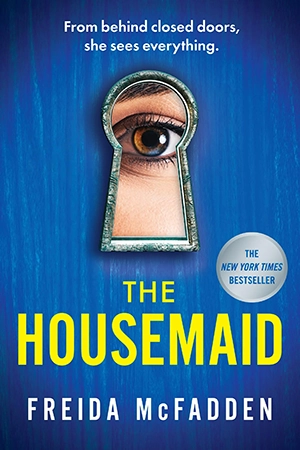Movie Review: “Shutter Island”

April 27, 2022
In the psychological thriller, Shutter Island, our main character, Teddy, suffers from Delusional Disorder. At the same time, Teddy’s wife suffers from extreme untreated Bipolar Disorder. The audience does not find this out until the end of the movie, but his symptoms are apparent throughout the film. People who suffer from Delusional Disorder can have symptoms such as feeling as though they are far more important than they are and victimizing themselves. Teddy believes he is doing breakthrough detective work in trying to locate missing patient Andrew Laddis, when he in fact is the missing patient. Andrew Laddis has created a whole new identity for himself as US Marshall, Teddy Daniels. At the same time, he slowly starts to lose trust for everyone around him because he believes everyone is secretly against him. His delusions also last for long periods of time, the one the movie depicts being over a month.
In the last scenes, we find out that Andrew killed his wife after she drowned their three children. She suffered from Bipolar Disorder and had what’s called manic episodes. During one manic episode, she intentionally set their apartment on fire. Andrew, already suffering from World War II PTSD, ignores her illness and moves the family out to the country, believing it will help. It was here that she drowned their children in the lake in their backyard during another manic episode. When Andrew comes home and finds them, she asks if she can bring their dead bodies inside and make them their living dolls, then begs to be set free. Andrew then shoots her and bursts into tears. Andrew’s Delusional Disorder is clearly a coping mechanism. His brain is protecting itself from the pain of past experiences and trauma.
Some people who watched the film initially interpreted that Andrew must have had schizophrenia. While similar, Schizophrenia and Delusional Disorder have several key differences. For starters, Schizophrenia is genetic and caused by abnormalities in the brain. Delusional Disorder is a coping mechanism and develops as a result of trauma that the brain is running from. Andrew is trying to cope with the particularly cruel and sudden loss of his wife and children. Secondly, Schizophrenic delusions often do not make sense or seem extremely irrational, such as believing you can control the weather or that the FBI is stealing thoughts from your mind. Andrew’s delusions are not crazy, but simply not true, and so the audience believes him almost until the very end. One thing that the two disorders have in common is relapses. Andrew comes back to reality after being shown pictures of his children and being told his own backstory, but will severely relapse and believe he is Teddy once again at the very end of the movie.
The film does an incredible job of not only depicting Delusional Disorder, but also of depicting the practices of psychiatric medicine in the 1950s and how they affected patients. In the scene in which Andrew realizes who he really is, the Doctor pleads with him to come back to reality because he is attempting a less morally indecent way of treating Andrew than what would’ve been standard practice for the time period. However, when Andrew relapses at the end of the movie, he is given a lobotomy. A lobotomy is an old practice of psychiatric medicine that involved prodding at the brain of a mentally ill patient with an ice pick through the eyeball. We see not only the effects of Delusional Disorder but also how it would’ve been treated in the 1950s and 60s.











